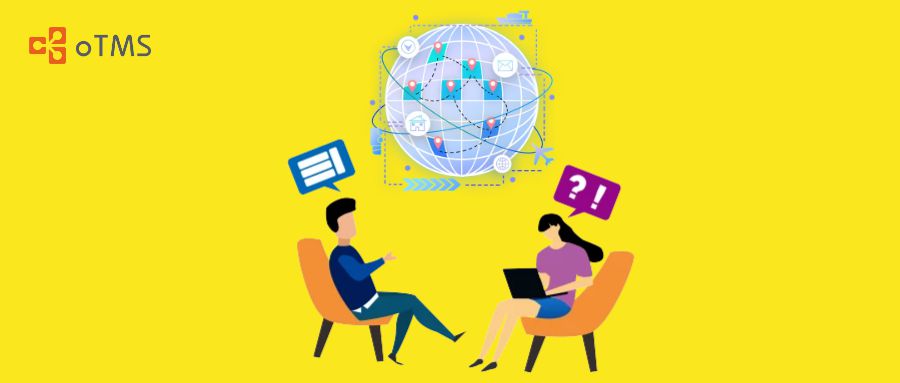Enterprise Interview | Crisis and Opportunity for Supply Chain Managers under the Global Change
 Page views: 3,932 times
Page views: 3,932 times
Since 2020, black swan events such as the new crown epidemic, the Russian-Ukrainian war, and the energy crisis have followed one after another. It seems that the world is undergoing major changes unseen in a century. Dealing with the challenges brought about by uncertainty has become a daily issue for most companies, especially multinational companies. For the supply chain of enterprises, there are many difficulties in all aspects from procurement, planning to transportation: freight rates remain high; energy and raw material prices are rising; global supply chain capacity is in short supply.
In this unstable “new normal”, how can supply chain managers break through? And are there opportunities in the crisis at the same time? Today, our interview column is honored to have Ms. Zhang Lu, Director of Supply Chain Purchasing in a leading company in the global food ingredients industry, to share her personal insights with us.
Guest introduction

Zhang Lu, Supply Chain Purchasing Director – Worked for a leading company in the global food ingredients industry for 15 years. After graduation, she joined the company as a management trainee and served as key account sales, business development supervisor, supply chain manager, and supply chain purchasing director. Rich experience in end-to-end supply chain and corporate strategy management.
The danger of supply chain in “chaotic era”
Ms. Zhang Lu’s current company is a leading global food ingredient solutions provider headquartered in the United States, focusing on converting grains, fruits, vegetables and plant-based raw materials into functional ingredients, which are widely used in food, beverages, animal nutrition , brewing and many other industries. The company has a number of factories in China and distribution centers along the coasts of North and South China. The transportation modes are mainly automobile transportation, sea transportation and multimodal transportation.
Regarding the current supply chain management challenges, Ms. Zhang Lu shared: “Since the new crown epidemic, especially since the second half of 2020, the global supply chain has been in a relatively chaotic situation. The specific manifestations include: unstable international shipping supply , the United States and other countries have insufficient transportation capacity, and domestic transportation business also has management problems with the repeated epidemics. The market as a whole is in a state of insufficient resources, and it is difficult to change the status quo through spontaneous adjustment. At the same time, with the emergence of the trend of deglobalization, production and supply The base is changing. These have caused short-term demand to exceed supply. And panic over uncertainty has intensified the behavior of many companies to stockpile, further unbalanced supply and demand.”
“So what we can see is that there is a shortage of raw materials in many industries. In addition, we are experiencing perhaps the worst inflation overseas in decades. Special raw materials, in particular, are hard to come by. This further affects the production capacity, which has increased the competitive pressure in the industry.”
Opportunities within crisis
Now that the impact of supply and demand and shortages have affected most companies, how to break through quickly may be able to take the lead in the competition. “Digital transformation can give us some certainty when dealing with uncertainty. Taking visualization as an example, when the supply chain is unstable and the goods cannot be obtained, they will be more eager to know where the goods are, and more hopeful Accurate data can be obtained at the right time.” Ms. Zhang Lu said that her company had already started its global digital transformation before the epidemic, and these preparations just made them more calm in the face of subsequent market changes.
“In our digital transformation since 2018, we have gradually innovated end-to-end supply chain management, including digital tools for planning, electronic platforms to improve the speed of customer demand feedback, e-commerce platforms, transport management systems, procurement management platforms, etc., This has improved our overall operational management.”
Among them, regarding the management of the logistics execution end, Zhang Lu believes that through the transport management system, it can indeed bring visible benefits to the enterprise, which are mainly reflected in:
1 Improve the communication efficiency between upstream and downstream, so that upstream and downstream can understand information and required data in real time on the same platform at the same time, and improve the overall management efficiency
2 Automate some manual processes, such as batch upload of logistics delivery tasks, which can free up labor
3 As a food ingredient enterprise, the real-time status of the goods can be photographed and uploaded during transportation, which can give customers greater confidence
4 Intelligent and real-time report data enables the team to respond quickly and provides the possibility for continuous optimization
The foundation of supply chain management optimization
In recent years, under the trend of industrial upgrading and digital transformation, various new technologies have emerged one after another. However, all technologies ultimately serve the essence of supply chain management. Ms. Zhang Lu said that the expectation of enterprises for the logistics supply chain is always to meet the needs of customers through competitive costs, and to continuously improve the level of customer service. Companies introduce new technologies and methods to achieve this goal.
“We have noticed that digital transformation is an inevitable trend, which allows companies to deal with sudden supply chain crises more calmly. At the same time, the operation and organizational structure of the supply chain will be more flexible to better face the ever-changing environment. At the technical level, artificial intelligence will also partially replace labor, especially in the part of the supply chain warehousing and production processes, there will be more applications of robotic arms, unmanned warehouses, etc. “
In addition, the uncertain environment will also reshuffle third-party logistics companies. Zhang Lu clearly felt that under the special circumstances of the epidemic, the industry’s top and large-scale tripartite logistics companies have better risk management and control capabilities and service supply capabilities. Therefore, these service providers are more likely to be favored by shipper companies in the future. In the long run, she believes that the logistics and transportation of special industries such as the food industry will form a cluster effect.
The world is in a dynamic changing pattern. The supply chain crisis in the past two years has grown exponentially compared to the past. This is both a challenge and an opportunity for enterprises. It depends on how to make a choice to take the lead. The same is true for supply chain managers, whether they are managers of Party A or practitioners of Party B, if they do not embrace changes and transform in time, they may miss the best opportunity.









